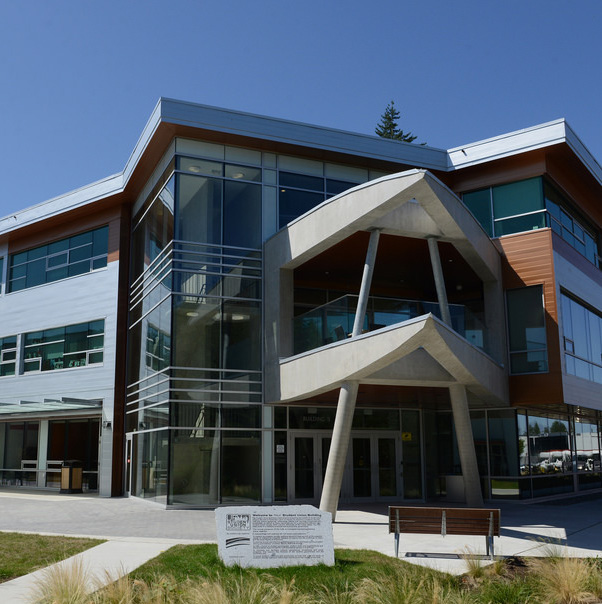The newly built Student Union Building (SUB) at UFV received the Leadership in Energy and Environmental Design (LEED) Gold certification for sustainability this August. The Student Union Society (SUS) and the University of the Fraser Valley partnered to design this environmentally friendly common space over a nine-year planning period.
During the design period for the SUB, the LEED certification was used as a tool for measuring the building’s general sustainability, but not as the end goal.
Craig Toews, vice president, campus planning and property development, said that, although the certification is a great achievement, the building has much more to show.
“Some of the choices made here, while they don’t credit us for that, have gone well beyond LEED gold,” said Toews.
The LEED certification is a point-based, tiered system that is used as the standard for sustainable construction for all provincial buildings. All new government buildings in B.C. must achieve a gold standard level, the second highest certification on the LEED scale.
Gold certification requires a minimum of 60 points.
Points are awarded for considering the sustainability of the build site, using environmentally friendly resources, managing rainwater, and for overall energy efficiency. However, these points can be awarded without considering the relevance to the local geography, or the type of building that is being created.
‘The goal’
“We must step back and ask ourselves, what are we really trying to achieve here with respect to how the building operates?” asked Craig.
The primary goals kept in mind while planning the SUB were to achieve energy efficiency, create a livable space, and extend the longevity of the building. This was achieved for the SUB by several key features.
The Thermenex system, a revolutionary technology at the time the SUB was designed, is one of these unique design components.
“It allows the transfer of heat from the sun from one side of the building to the other,” described Jorge Candia, projects manager at UFV. This significantly reduces the use of fossil fuels to heat and cool the building.
The Thermenex is essentially a ventilation system that redirects heat from one section of the building, where it’s not wanted, to where it’s needed.
In addition, the ditch outside of the building is part of a three-part, natural water detention system. This replaced the original plan for an underground concrete water storage system. Retaining water underground is the more common method of dealing with excess water in regions with high precipitation.
By being flexible and entrepreneurial with their planning, and choosing not to store the water but to instead allow it to return to the UFV ecosystem, Candia saved the project over $175,000.
Much of the water used within the building is heated by a rooftop solar water heater. This reduces the amount of fossil fuels that will be burned in order to get water up to an ideal temperature.
“In the summer months, it can get too hot sometimes,” said Blair McFarlane, UFV energy manager.
Candia claimed that the water in the rooftop heater was hot enough during the summer’s heatwave to make tea with.
Another feature is the wood paneling that covers over 40 per cent of the main sitting area. The wood is from a local B.C. source, and is considered a very sustainable building material.
The architectural designs on the building are also environmentally friendly. The iconic overhang at the front entrance was designed to shade the building, and the large windows on the south side of the building were planned to allow in natural light and warmth during the wintertime.
“[The building] should have received more points,” said Candia.
Although the LEED Gold certificate has been received, McFarlane assured that this is only the beginning of UFV’s sustainability goals.
“The University of the Fraser Valley strives to be a leader in the social, cultural, economic, and the environmentally responsible development in the Fraser Valley,” said McFarlane. “I think this building and this LEED certification speaks to our continued direction.”
As of last winter, the SUB was found to be operating 43 per cent more efficiently than all other buildings on campus, which is a 10 per cent increase over the previous winter.
The operating efficiency of the building is only expected to improve, as the maintenance team fine-tunes the building’s mechanics. This building is being described as the signature piece in UFV’s sustainability plans, and the flagship for the environmentally friendly direction in UFV’s culture.


